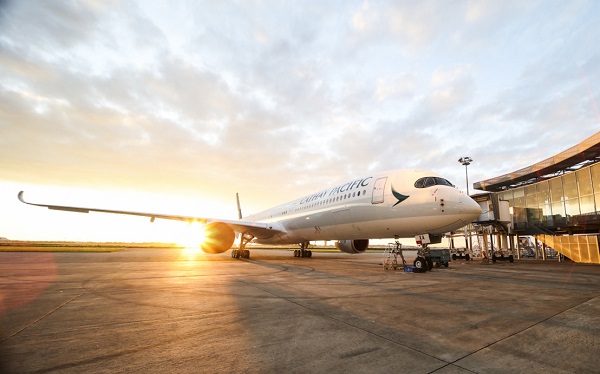Airbus confident its A350-1000 will beat the 777X in Qantas Sunrise bid
17 October, 2019
5 min read
By joining our newsletter, you agree to our Privacy Policy


Airbus is confident its A350-1000 will give Qantas the ability to better achieve its ultra-long-range mission from Eastern Australia to London and New York than its Boeing rival.
The manufacturer officially confirmed this week that the biggest version of its A350 family is the contender in the race against Boeing to become the “hub buster” aircraft flying the world’s longest route as part of Project Sunrise.
Qantas has nursed the dream of flying non-stop to Europe for years and finally made it a reality in 2018 using a Boeing 787-9 aircraft to fly from London to Perth.
It is using the same aircraft to conduct test three test flights before Christmas but will need a more capable jet with greater payload capacity to pursue its Project Sunrise aspirations.
READ: QF7879 set to make history.
Qantas is meticulous when it comes to choosing aircraft and the current competition running between pitting the A350-1000 against Boeing’s 777-8 is being closely watched by other carriers.
But Boeing has yet to specify a launch date for the 777-8 and while it is reportedly offering the bigger 777-9 as an interim solution, this has given Airbus an edge.
Airbus revealed this week it expected by 2022 to have an aircraft with a slightly higher maximum take-off weight capable of carrying a payload of 375 passengers 8700 nautical miles, about 700 nautical miles further than the current range.
Airbus head of A350 marketing Marisa Lucas-Ugena told AirlineRatings the A350-1000 was in terms of payload and range capability “by far the closest to requirements Qantas has put on the table”.
The aircraft will not be exclusive to Qantas and Lucas-Ugena said it would be available to any of the manufacturer’s customers.
The European manufacturer plans to achieve the increase through the tweaks to aerodynamics, airframe and engines that push up the efficiency of a jet through its lifetime.
This means the A350-1000, which has already incorporated many of the lessons learned from the A350-900, will not need the extra fuel tanks used by the A350-900ULR to perform ultra-long-range missions for Singapore Airlines.
The A350-1000’s extended range would see the plane reach New York from Sydney with 375 passengers on board but falls slightly short of London with that payload.
However, the plane would be capable of reaching both destinations from Sydney or Melbourne with the stated Qantas requirement of 300 passengers.
Lucas-Ugena was coy when it came to revealing specific details of the improvements but said that the configuration Qantas was considering meant "we do offer an airplane that is capable of doing the mission with the payload Qantas wants to take and more importantly we can deliver it on time.’’
She noted research into the needs of passengers on such a long flight showed will need to be able to sleep as well as a space to move around to socialize and exercise, something the Flying kangaroo has already said it wants to incorporate in the plane.
Asked how the A350-1000 compared with its rival, Lucas-Ugena said the main advantage was that it was an all-new aircraft with no compromises as well as the latest technology and engines.
It also has an airframe comprising 70 percent advanced materials which give it a weight advantage over the heavier 777X.
“That makes the airplane extremely light compared to 777X, which is at the end of the day a derivative of the 777 family,’’ she said.
While she acknowledged new wings and engines made the 777X more efficient, the Airbus executive described the aircraft as compromised by its old design and the additional weight from those bigger wings and engines.
She said the A350-1000 would be 45 tonnes lighter than 777-9 when additional fuel was taken into account, giving it a “tremendous advantage”.
She also estimated that the A350-1000 was 13 percent more efficient in terms of fuel per trip compared to the 777-9.
She said the 777-8 could operate at similar ranges to -1000 but was a smaller aircraft that was 5.5m shorter and could not take as many passengers.
This meant it did not have the same fuel efficiency per passenger, she added.
Other advantages included the operational reliability of the A350-1000, which was currently 99.5 percent, as well as its flexibility.
The Airbus executive pointed to Cathay pacific which used the -1000 to launch its longest route from Hong Kong to Washington DC but also used it other routes.
“It offers tremendous flexibility and that flexibility is something when you are looking at a project that is so extreme, so risky in a way — it can go very well or it can go not that well depending on the season — having an airplane that you can put anywhere in the network and will be equally efficient is a must,” she said.
Get the latest news and updates straight to your inbox
No spam, no hassle, no fuss, just airline news direct to you.
By joining our newsletter, you agree to our Privacy Policy
Find us on social media
Comments
No comments yet, be the first to write one.

